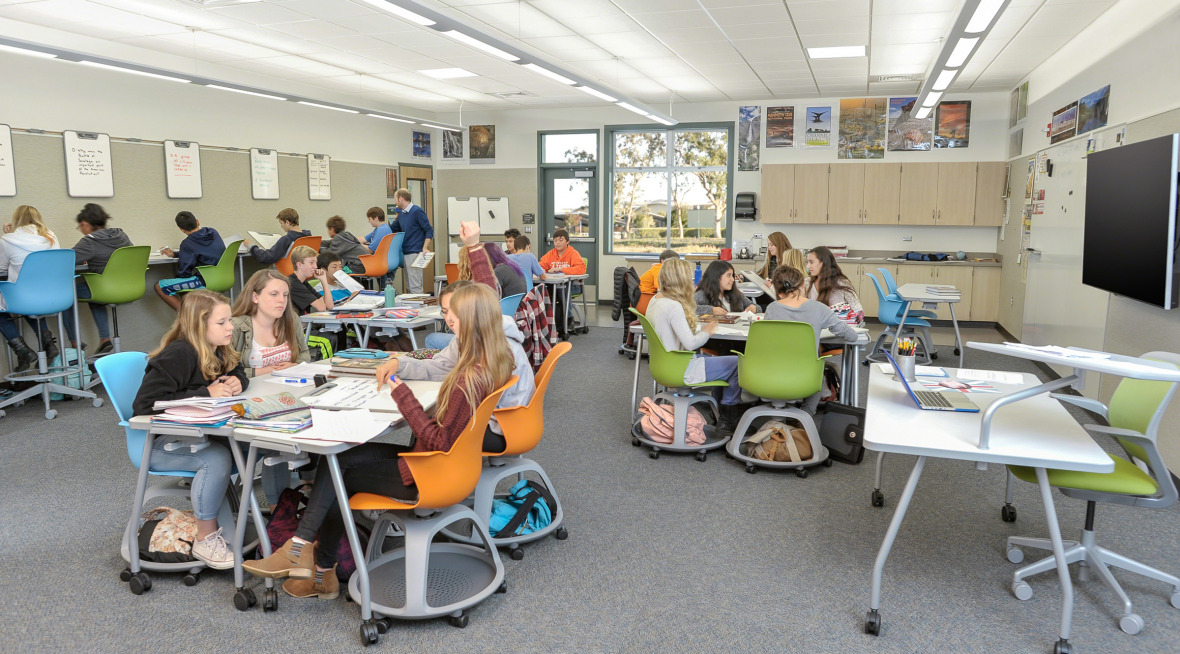We use cookies to maximize your online experience with us. By closing this window, you consent to our cookie policy. You can change your cookie settings in your browser any time. For more information, please see our Privacy Policy located on the footer of this site.
How Latest Education Trends are Reshaping Classroom Design


How we “do” education has changed immensely in the last decade. Pedagogy has evolved and the role of the teacher has shifted from the bestower of knowledge to the facilitator of it. Educators now flip their classrooms, encourage active, project-based learning and increasingly use online tools to deliver a more personalized education experience. These changes in teaching and learning have had a dramatic effect on how we think about and design classroom spaces.
“The old, more fixed, more static, more traditional classroom layout is becoming obsolete. It just can’t support those new behaviors and activities and, in fact, gets in the way of them,” says Sean Corcorran, general manager, Steelcase Education.
The word “classroom”, itself, is becoming an outdated term. Many people prefer to say “learning spaces” and the vocabulary of education now includes words like “flexible,” multimodal,” and “collaborative.”
“The [word] classroom has become so pejorative that the minute you say it it kind of boxes people’s thinking,” says Mark Thaler, an architect with Gensler, a global design firm.
The term “learning space” doesn’t come with any preconceived notions and shifts the thinking to what needs to be accomplished in the space. Design really derives from there.
Mobile Devices
Many of the changes we now see in education are made possible by the integration of technology. The rise of 1:1 and BYOD learning environments, especially, brings with it a host of challenges that simply didn’t exist before.
The biggest challenge when it comes to devices is keeping them charged says Cindy Weinschreider, director of marketing Communications, Bretford Manufacturing Inc. “Tables with built-in power and other power-enabled furniture is necessary to prevent battery drain, which in turn, interrupts teaching and learning,” she says.
to read entire article click here!
